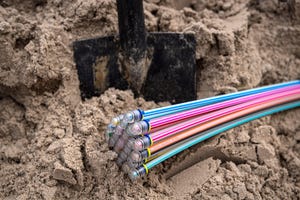
After roughly two decades, it's time to start saying goodbye to 3G.
Since launching the technology around 2002, and using it to bring to life initial smartphones like the iPhone, all of the nation's big wireless network operators are preparing to shutter their 3G networks in the next few years.
"To better support the high data usage on our network, we are sunsetting our 3G network to boost capacity for next generation technologies," explained AT&T in a statement to Light Reading.
Indeed, 3G is quickly heading the way of cassette tapes and Blockbuster video – it played an important role during its heyday, but it has been superseded by more capable technologies like 5G.
But how exactly will this 3G shutdown occur? Here's where each major US wireless network operator stands in the move away from 3G:
When | Why | How | The details | |
Verizon | End of 2020 | "Virtually all Verizon data traffic runs on our 4G LTE network. We have very few customers who are still accessing our 3G network." | Customers "are welcome to call into our customer service team and we will be happy to help them." | |
AT&T | "Early" 2022 | "This will help free up spectrum to better accommodate next generation technologies and services." | "We will work with our customers during this transition." | |
T-Mobile | "Over the next several years" but "we haven't shared timing." | "We will be phasing out some older technologies ... to free up even more capacity for LTE and 5G." | "We'll make sure any affected customers are aware in advance to make adjustments if needed." | N/A |
Importantly, all of these carriers have already taken the first big step toward shutting down their 3G networks: They are no longer activating any 3G devices. This is a common move among wireless network operators looking to shift to newer technologies – typically they enact it a few years before an actual network shutdown on the assumption that most customers will naturally upgrade to a newer, supported device before service is shut off.
Further, many operators are content to drag out the process. For example, Verizon decided to delay its own 3G shutdown by a year.
To be clear, the great 3G shutdown in the US has precedent. For example, Sprint recently shuttered its WiMAX network. And AT&T discontinued service on its 2G network in 2017. According to AT&T's filings with the SEC around that time, it counted 4 million customers on its 2G network, the bulk of which were IoT devices.
— Mike Dano, Editorial Director, 5G & Mobile Strategies, Light Reading | @mikeddano
About the Author(s)
You May Also Like




_International_Software_Products.jpeg?width=300&auto=webp&quality=80&disable=upscale)







